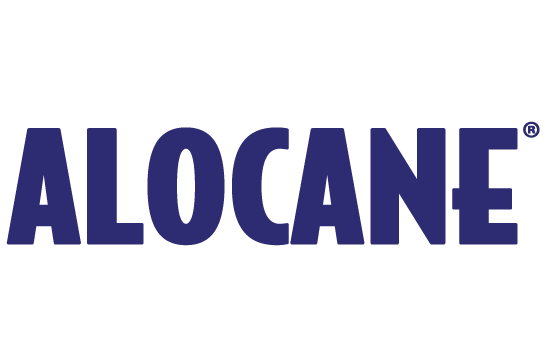Treatment & uses
Find answers to your questions
Different Types of Burns
Table of Contents
Understand Different Types of Burns and Find Effective Treatment
Burns are among the most common household injuries–and unfortunately the most painful–affecting millions of people each year. They occur when the skin is damaged due to heat, chemicals, electricity, radiation, or extreme cold. Understanding the different types of burns, their symptoms, and appropriate treatments is crucial for effective first aid and recovery. Explore the common types of burns, their causes, and methods of treatment. Staying informed means staying safe!
Common Types of Burns
Thermal Burns
Thermal burns result from direct contact with hot objects, liquids, steam, or flames. These burns are frequently seen in kitchens and industrial settings, as scalds from hot liquids frequently burn the skin. Thermal burns range in severity depending on exposure time and temperature. One of the most common burns, thermal burns can be prevented on a day-to-day basis with proper kitchen etiquette and safety measures.
Sunburns
Sunburn is the type of radiation burn caused by prolonged exposure to ultraviolet (UV) light. It can lead to skin redness, pain, peeling, and long-term skin damage, including premature aging and increased risk of skin cancer. Despite being preventable with sunscreen and protective clothing, sunburn remains a widespread issue, especially during summer months.
Chemical Burns
Chemical burns occur when the skin comes into contact with strong acids of bases found in common household items like batteries, cleaning products, and oven cleaners. While typically not as common as thermal or sunburns, acids in everyday products increase the risk for exposure. A lesser-known type, phytophotodermatitis, happens when certain plant compounds react with sunlight, causing severe skin irritation and burns. Immediate rinsing and neutralization of the chemical agent are essential in minimizing damage.
Electrical Burns
Electrical burns result from contact with a strong electrical current. They can occur from touching frayed wiring, using wet hands on electrical appliances, or coming into contact with power lines. Unlike other common burns, electrical burns can cause internal injuries not immediately visible on the skin, making medical evaluation crucial.
Frostbite
Frostbite is a burn-like injury caused by extreme cold, leading to rapid freezing of skin and underlying tissues. It commonly affects fingers, toes, ears, and the nose, turning the affected areas pale, numb, and potentially leading to tissue death if not treated promptly. People exposed to extreme weather conditions such as hikers and outdoor workers are particularly at risk. Making sure to wear adequate protective clothing and gear can decrease the risk of frostbite–aka, bundle up.
Degrees of Burns
First-Degree Burns
First-degree burns only impact the outermost layer of skin (the epidermis). They usually cause redness, minor swelling, and minor pain. Sunburn is a typical example of a first-degree burn.
Second-Degree Burns
Second-degree burns penetrate the epidermis, or outermost layer, and reach the dermis. These burns can cause blisters, swelling, and significant pain. Proper care, such as washing the area with cool water and covering it, is essential to prevent infection and promote healing.
Third-Degree Burns
Third-degree burns destroy both the epidermis and dermis, potentially affecting underlying tissues such as muscles and nerves. The affected area may appear white, brown, or blackened, and sensation may be lost due to nerve damage. Third-degree burns require immediate medical attention–don’t wait.
Fourth-Degree Burns
The most severe type, fourth-degree burns extend beyond the skin into muscles, tendons, and bones. These burns are life-threatening and demand urgent emergency medical care.
Methods for Treatment and Effective Burn Relief
In addition to washing affected areas with cool water and applying an aloe vera gel, Alocane offers a range of high-quality products designed to provide immediate pain relief, reduce inflammation, and promote healing for various types of burns. For third-degree burns and up, don’t hesitate to seek medical attention immediately.
Alocane Max Maximum Strength Emergency Burn Gel
Ideal for minor burns such as sunburns, kitchen burns, radiation burns, and chemical burns, Alocane’s Max Strength Gel contains 4% Lidocaine, the highest strength available without a prescription. This water-based formula absorbs quickly, preventing heat from being trapped in the skin and providing fast pain and itch relief in minutes. Also available in smaller gel packets, Alocane can provide on-the-go relief
First Aid Tips for Minor Burns
For minor burns, quick and appropriate first aid can prevent complications and speed up recovery:
- Cool the burn under cool (not cold) running water for 10-15 minutes. This helps reduce temperature and limit tissue damage.
- Avoid applying ice directly to the burn, as it can worsen tissue damage.
- Apply a soothing, fast-acting treatment such as Alocane Max Burn Gel or Alocane Burn Spray to relieve pain and promote healing.
- Cover the burn loosely with a sterile, non-stick dressing to protect it from infection.
- Avoid popping blisters as they provide a natural barrier against infection.
- Monitor for signs of infection, such as increased redness, swelling, pus, or fever, and seek medical attention if necessary.
When to Seek Medical Attention
While burns can be treated at home with proper care and Alocane products, some situations require professional medical attention:
Third and fourth degree burns
- Burns covering large areas of the body
- Burns on the face, hands, feet, or joints
- Electrical burns (even if they appear minor, they can cause internal injuries)
- Chemical burns that do not improve after rinsing
- Choosing a selection results in a full page refresh.
- Opens in a new window.
